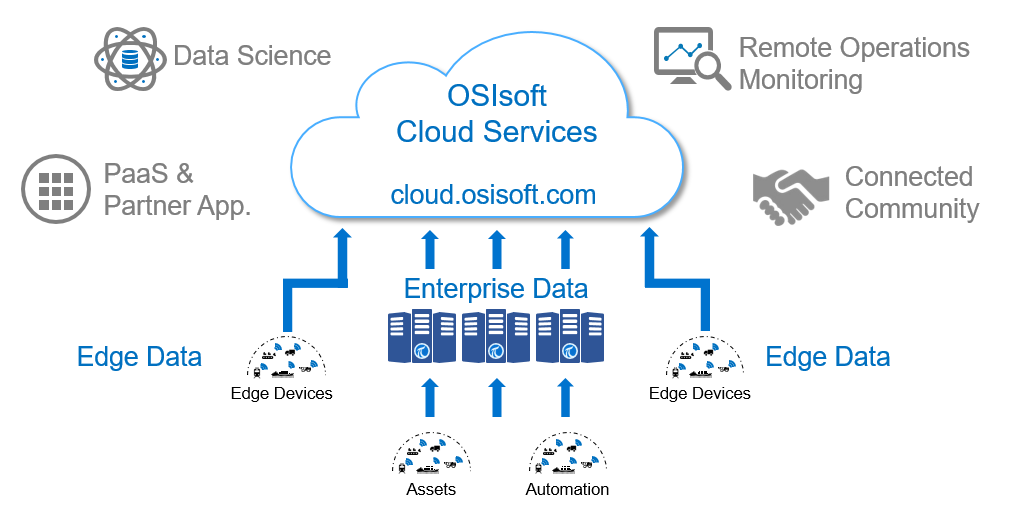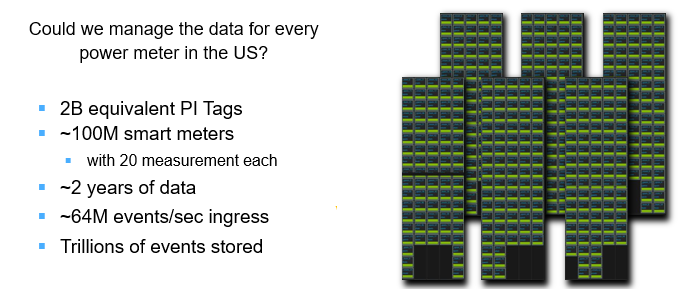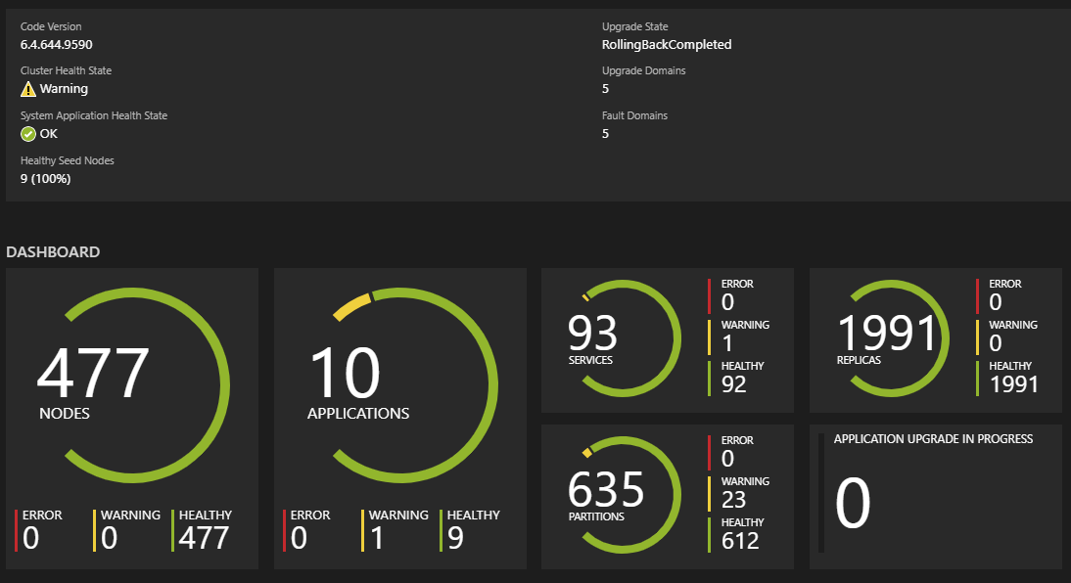We released OSisoft Cloud Services this week, our cloud-native system for quickly unifying data from the PI System and other sources of data into a single place for deep analysis and other projects. The full release is here. Your account manager, partner, and system integrator can tell you more. But in the meantime, here are some answers to frequent questions.

1. What is OCS?
OSIsoft Cloud Services (OCS) is a cloud-native, real-time data management system for unifying and augmenting critical operations data across an organization to accelerate industrial analytics, data science projects, data sharing, and other digital transformation initiatives. Let's say you have the PI System at 26 different locations. Your local engineers use it constantly to fine-tune their plants. But HQ also wants a clear view into what's going on everywhere at once. OCS streamlines that process.
It consists of a cloud-based data store and complementary technology that eliminate the custom coding and other time-consuming grunt work often needed to bring data sources together.
Another way to look at it: we're reducing the cost of curiosity by reducing the speed bumps and barriers that can get in the way of digital transformation.
2. What do you do with OCS?
We see four primary use cases:
- Unifying data to run analytics. This will be the first, most popular use case. Partners like Seeq, Toumetis, Petuum, Casne Engineering, Aperio, Trendminer and Diemus are building offerings and working on projects with customers already. These partner offerings are able to take advantage of OCS's ability to ingest, store, and provide access to all of an industrial company's sequential data (more on this term later!) from one location
- Data Science. OCS has the ability elastically scale up and down compute resources without the need of user interaction. Data scientists are in short supply, so being able to bring third party experts into projects further saves time.
- Data sharing internally and externally. OCS makes it easy to control and manage access. Think of letting a manufacturer track and monitor equipment it produced inside your facility for predictive maintenance. Or letting a utility monitor power to reduce peak power surges.
- Connecting remote assets. Like IoT gateways, remote sensors, old production equipment you just don't want to link to SCADA. You can connect remote devices to a PI System now. OCS simplifies the process and makes it easier for a wider number of individuals access the data.
3. What are the biggest benefits of OCS?
Because business speaks in threes:
- Seamless Integration. We had a customer a few years ago that tried to launch a data science project. They knew the problem they needed to solve. They had the business case built. The two engineers from operations spearheading it needed 14 people from IT to determine who would deploy and manage the database for the project, how to manage external credentials for the external data scientist, and how to allocate staff for IT components of the project. With so many stakeholders to satisfy and people to allocate for the project and technology hurdles to conquer, the project stalled. Now it's being resurrected with OCS.
- Pricing. Customers pay by the data streams they access. You can ramp the total up or down. Plus, it's not weighted by GB so you can store as much history as you like. Some people we expect will store quite a bit and access it only later.
- Speed. Within a few hours, a person can transfer a few thousand data streams from their PI Systems to OCS and start accessing it. OCS does not require you to assemble a bunch of individual components to achieve this. It's all possible in a few configuration steps.
4. Give me some performance stats.
To test the scalability and stability of OCS, OSIsoft created a database containing the equivalent to the data generated by all of the smart meters in the U.S. over the last two years, or two billion data streams (100 million meters with 20 data attributes each). OCS successfully stored up to 1.2 billion data points per hour and was managing all two billion streams simultaneously over a weekend.
5. Is it the same code as the PI System?
No. It's brand new and cloud-native. While OCS does not yet map one-to-one with the features of today's PI System, customers should expect OCS and the PI System to work seamlessly together to enable a broader set of capabilities.

OCS can potentially handle all real-time data from every power meter in the U.S.
6. Does it compete with the PI System?
No. Different technologies for different jobs. The world is moving to hybrid architectures with specialized technologies for analyzing and storing data at the edge/device level, the plant level, and in the cloud depending on the volume of data, the task at hand, and the cost of bandwidth, the requirements for reliability and latency and other parameters.
The PI System is, and will continue to be, the system of record at the plant level and one of the primary tools for optimizing production, reducing energy and accomplishing other goals. It's like a nervous system for facilities.
OCS can be used to unify data from distributed PI Systems, IoT gateways and other devices. OCS is a real-time system but it will be frequently adopted for long-term R&D projects to achieve new insights that can be deployed across an organization.
Additionally, we are building out a portfolio of technologies for edge devices.

An OCS cluster with 477 server nodes, 3132 cores and 11TB of RAM
7. Is it SaaS, PaaS or IaaS?
PaaS. We manage OCS. It runs on Microsoft Azure (IaaS) and our partners are developing SaaS technologies.
8. What's with the “sequential data base” word? Why not call it a time series data base?
We're building a platform that can accommodate all sorts of data that is generated in sequence. Timestamps are the most common, but you can also index the data on other interesting primary keys such as depth (drilling in O&G), lot number (chemicals & Pharma), distance (utilities & pipelines). Support for multiple indexes really helps to speed up search and data retrieval.
9. Who is using it?
We've been in closed preview for about 18 months. The first users are software developers creating applications and services for OCS. They in turn are bringing in customers. DERNetSoft, for instance, is using OCS to aggregate data into a marketplace. Users and utilities with permission can then access anonymized data to help them figure out ways to reduce peak power or take other actions. An oil company is using it for predictive maintenance and other tasks. A large cement manufacturer will be using it to aggregate plant data to reduce energy and increase yields.
OSIsoft partners developing OCS enabled applications and services include Petuum, Seeq, Toumetis, Transpara, Casne Engineering, Diemus, Aperio, and TrendMiner.
10. Where is it available?
North America, right now. Europe and other regions will be added soon.
To learn more about OCS, watch this presentation.